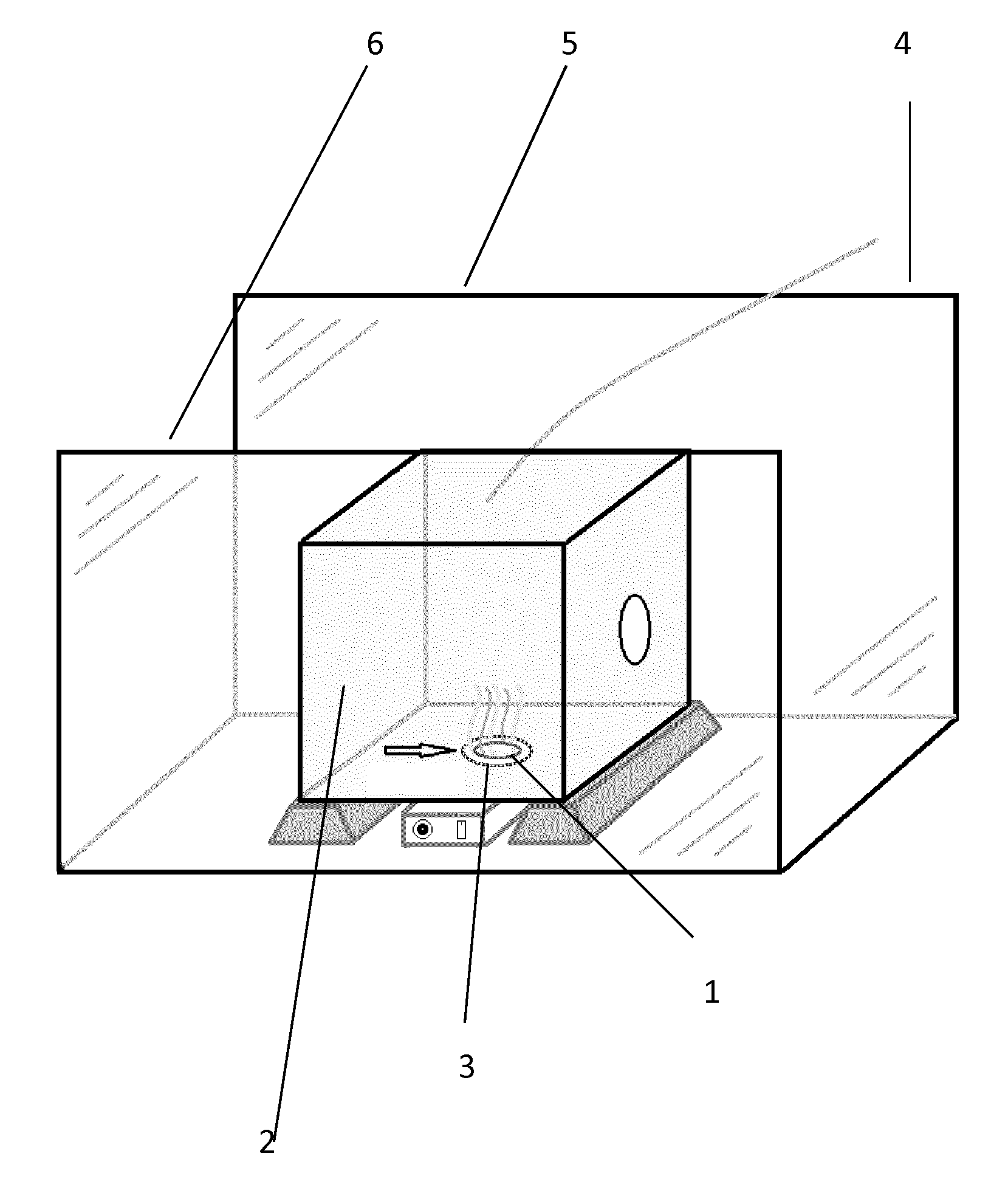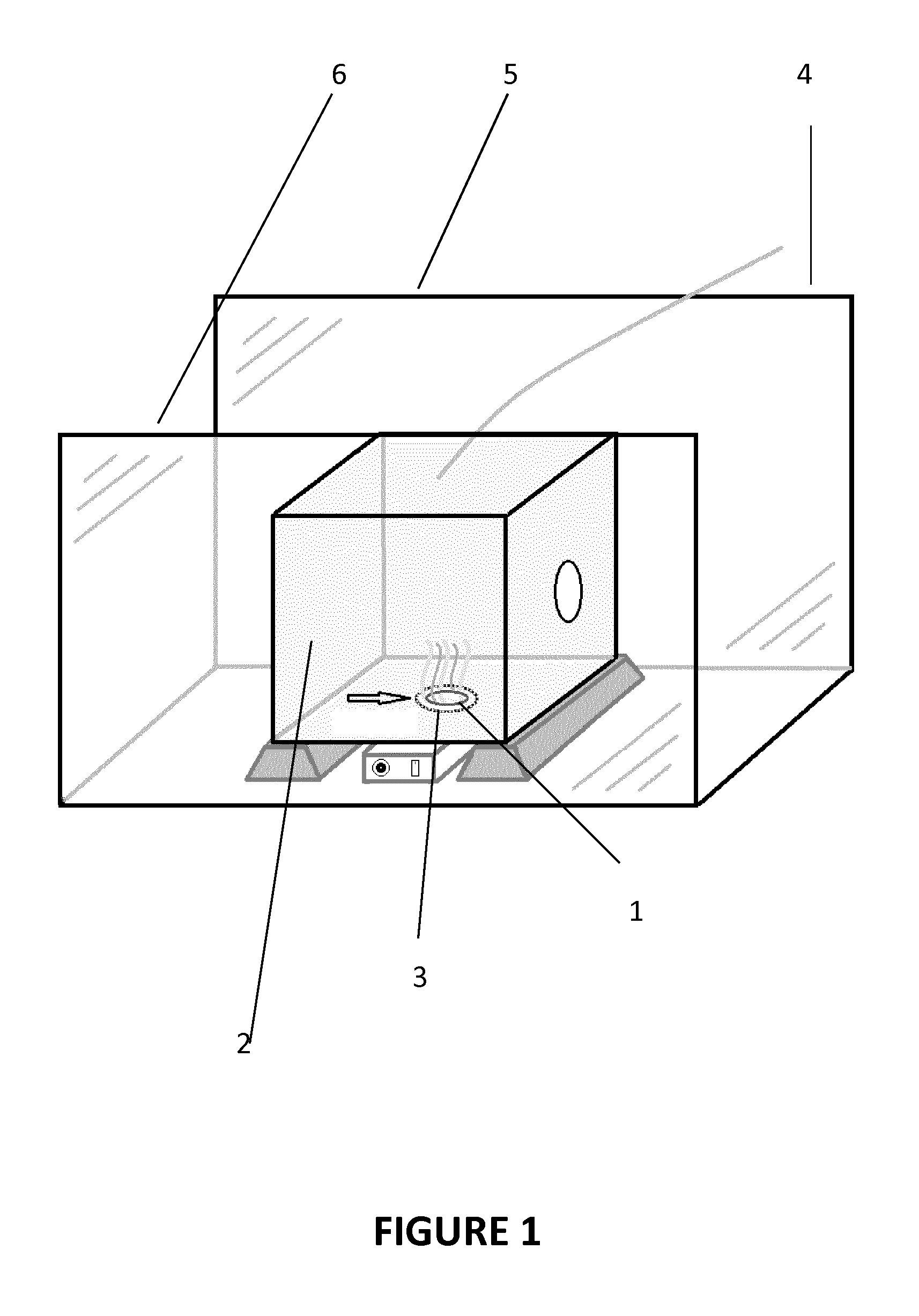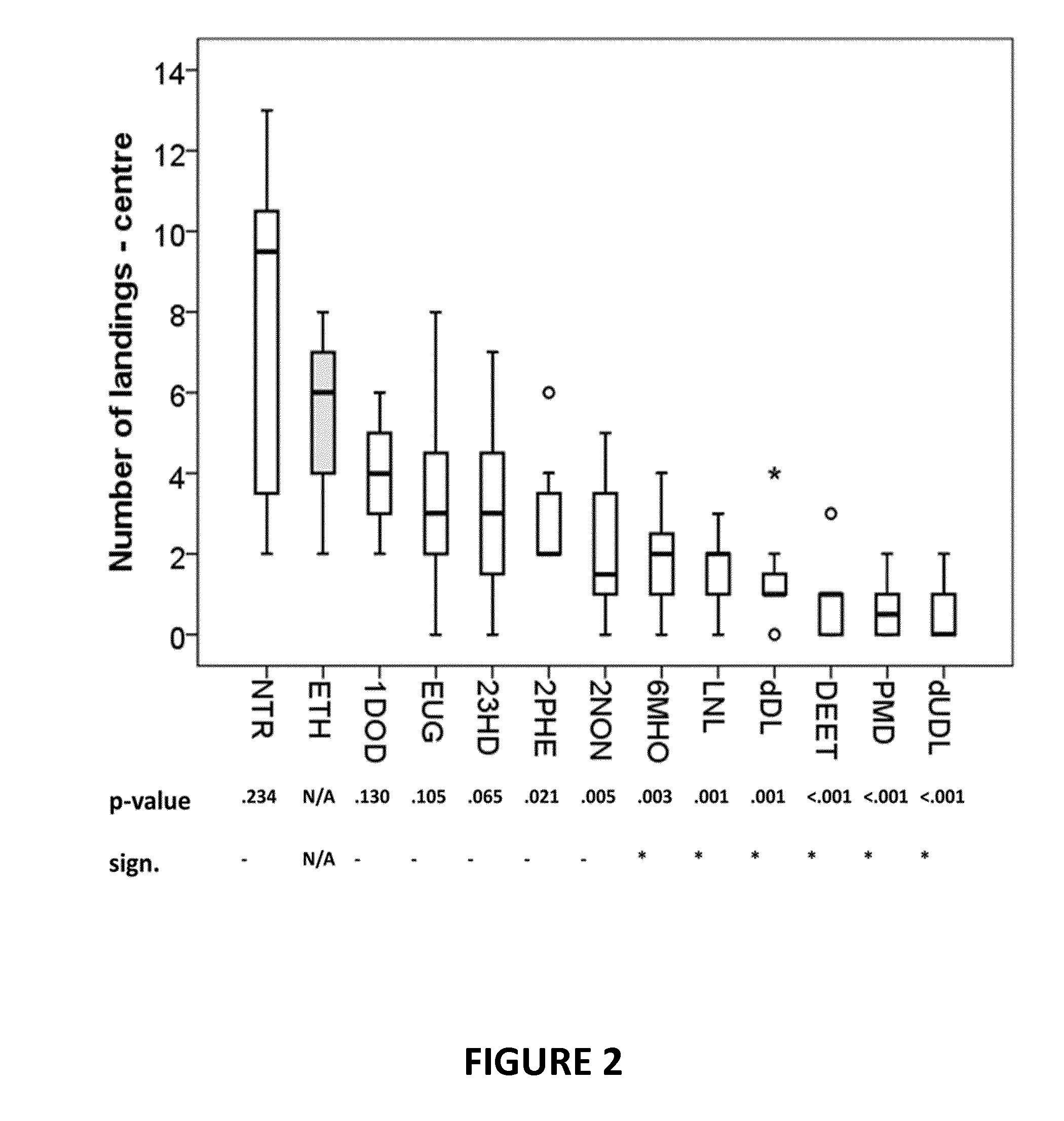Insect repellent compositions and methods of use
- Summary
- Abstract
- Description
- Claims
- Application Information
AI Technical Summary
Benefits of technology
Problems solved by technology
Method used
Image
Examples
example 1
Laboratory Bioassay of Repellent Compounds
Bioassay Apparatus and Set Up
[0064]The bioassay was set up in a room in which air temperature and relative humidity (RH) could easily be controlled. During experiments these parameters were continuously monitored using a Tinyview® data logger with display. Temperature was maintained at 24±1° C. and RH was kept between 60 and 75%.
[0065]Because repellents are volatile compounds, the risk of contamination of the setup is always present when testing these substances. Therefore, this bioassay uses replaceable 30×30×30 cm Bugdorm® cages as flight chambers. The apparatus used is shown in FIG. 1. Although made of polyethylene (PE) and polypropylene (PP) which may potentially pick up the compounds tested, no contamination effects were observed, in contrast to a previously used cage made of metal and polycarbonate (see below).
[0066]Mosquitoes were attracted to a heated circular plateau (1) of diameter 15 cm acting as a landing surface, that was positi...
example 2
Semi-Field Testing of Candidate Repellent Compounds
Mosquitoes
[0081]Mosquitoes (An. gambiae s.s., Mbita strain; henceforth termed An. gambiae) were reared under ambient atmospheric conditions in screenhouses (larvae) and holding rooms (adults) at the Thomas Odhiambo Campus (TOC) of the International Centre of Insect Physiology and Ecology (ICIPE) located near Mbita Point township in western Kenya. Mosquito eggs were placed in plastic trays containing filtered water from Lake Victoria. All larval instars were fed on Tetramin® baby fish food which was supplied thrice per day. Pupae were collected daily and placed in mesh-covered cages (30×30×30 cm) prior to adult emergence. Adult mosquitoes were fed on 6% glucose solution through wicks made from adsorbent tissue paper.
[0082]Four to six day old female mosquitoes that had no prior access to blood were used for the semi-field experiments. The mosquitoes were collected from the colony at 12:00 h each day and stored for eight hours in the c...
example 3
Laboratory Testing of Delta-Undecalactone
Attractant
[0104]The five-compound odour bait of Table 1 which simulates human scent, was used as an attractant in both the laboratory and field experiments.
Repellent
[0105]The repellent of choice for this study was delta-undecalactone in the form of porous microcapsules “μcaps” (Devan Chemicals, Belgium) which allow slow release of the encapsulated compound over a prolonged period of time.
[0106]A 100% cotton net fabric of 65 g / m2 (Utexbel, Belgium) was treated with an emulsion of 116 g μcaps per litre (43% active compound). The emulsion was applied by padding, pick up rate was 67%. The fabric was dried and fixed at 110° C. The final product contained 2.18 g dry μcaps per m2.
Mosquitoes
[0107]The mosquitoes (An. coluzzii, formerly An. gambiae s.s. form M) used in the laboratory experiment were reared in climate chambers at the Laboratory of Entomology of Wageningen University, The Netherlands. The original population was collected in Suakoko, Lib...
PUM
 Login to View More
Login to View More Abstract
Description
Claims
Application Information
 Login to View More
Login to View More - R&D
- Intellectual Property
- Life Sciences
- Materials
- Tech Scout
- Unparalleled Data Quality
- Higher Quality Content
- 60% Fewer Hallucinations
Browse by: Latest US Patents, China's latest patents, Technical Efficacy Thesaurus, Application Domain, Technology Topic, Popular Technical Reports.
© 2025 PatSnap. All rights reserved.Legal|Privacy policy|Modern Slavery Act Transparency Statement|Sitemap|About US| Contact US: help@patsnap.com



